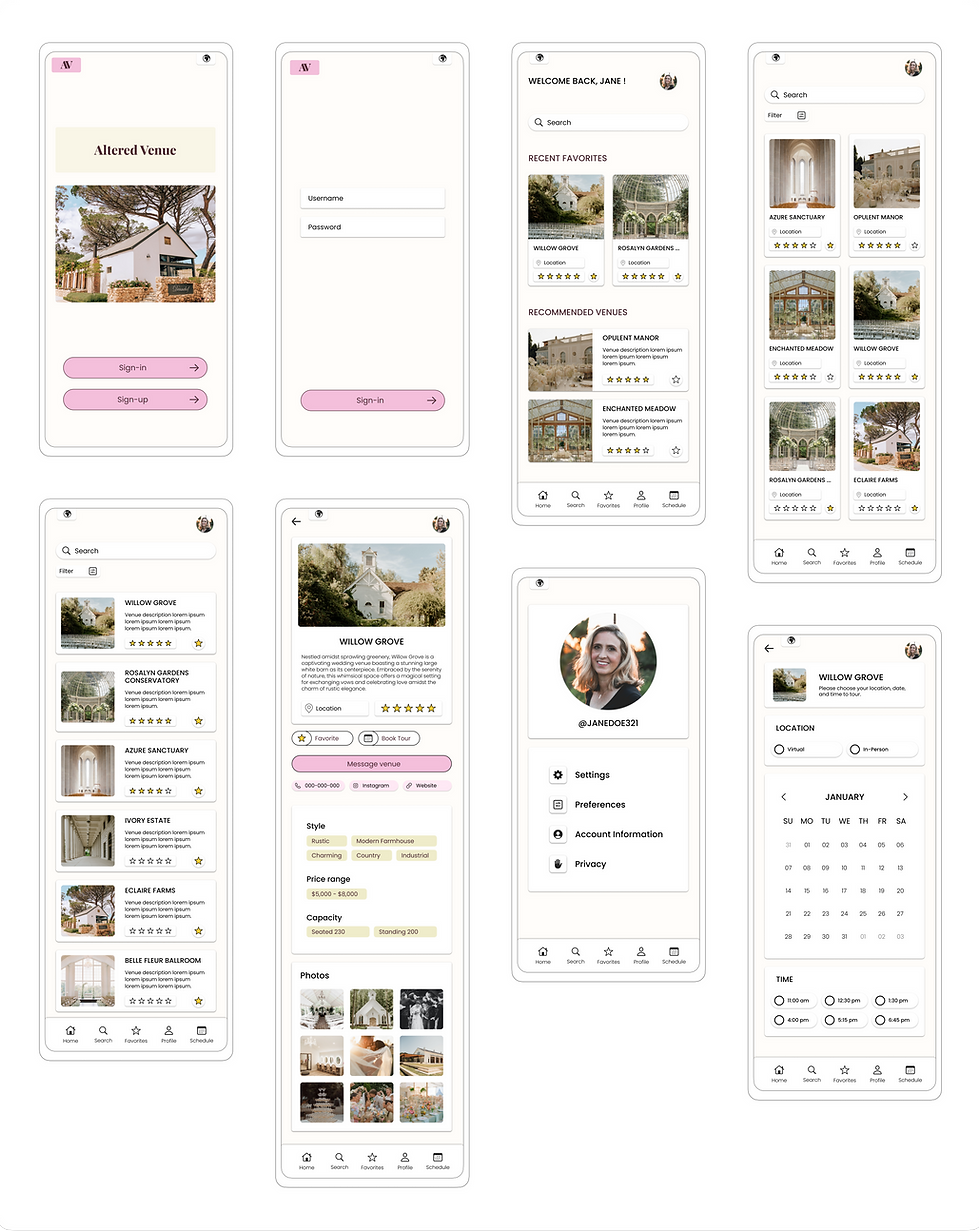
Project Details
Overview:
This project, undertaken as part of the Google UX Design Certification, was initiated with a prompt generated by Sharpen, a design challenge generator renowned for its open-ended prompts. The selected prompt tasked me with designing a virtual tour mobile application for a trendy wedding venue. I individually conducted every part of the UX design process, from empathizing with users to delivering a high-fidelity prototype. I crafted the app with an aim to guide users through the wedding venue search process with organization, ease, and accessibility infused at the forefront in every step of the user journey.
Tools

Figma

Stark
Role: UX Designer
Client: Google UX Design Certification
Duration: 8 months (May 2023 to January 2024)
Goals & Objectives:
-
Endeavor to create the most user-centric, intuitively organized, and accessible wedding venue search application, setting a new benchmark for excellence in the market.
-
Incorporate optimal app functionalities and curated details aimed at empowering users in discovering their ideal wedding venue with maximum efficiency and satisfaction.
1. Empathize
In the first phase of the formal UX design process, I started on the Empathize stage, where I crafted user personas, user stories, and user journey maps. This foundational work was instrumental in fostering a deep understanding of users' needs and pain points, laying the groundwork for empathetic and user-centered design solutions.
2. Define
Building upon the insights gleaned from the Empathize phase, I transitioned into the Define stage, where I synthesized the user data into clear problem statements, hypothesis statements, and goal statements. These artifacts were instrumental in guiding the design process going forward, enabling me to prioritize critical user needs and challenges.
3. Ideate
Expanding on the defined user needs, I initiated the Ideate phase by conducting a comprehensive competitive audit and fostering creative brainstorming through ideation techniques like How Might We (HMW) and Rapid Sketching. The primary objective was to explore a wide spectrum of innovative solutions.

4. Prototype
Leveraging insights gathered from the preceding phases, I progressed to the Prototype stage, where I translated conceptualizations into tangible design artifacts. This encompassed the creation of a user flow diagram, both big-picture and close-up storyboards, a sitemap, as well as paper and digital wireframes. Subsequently, these components were synthesized into a cohesive low-fidelity prototype, poised for user testing and validation.

5. Test
Equipped with a polished low-fidelity prototype primed for user feedback, I orchestrated a UX research plan to conduct an unmoderated usability study. Following the study, I diligently synthesized the feedback and insights, integrating them into iterative design modifications, ensuring optimal alignment with user expectations and requirements.
6. Prototype
Drawing upon the wealth of insights gathered, goals set, and user feedback obtained, I crafted a comprehensive sticker sheet of components in Figma, refined mockups with great precision, and arrived at the development of a fully functional high-fidelity prototype.










